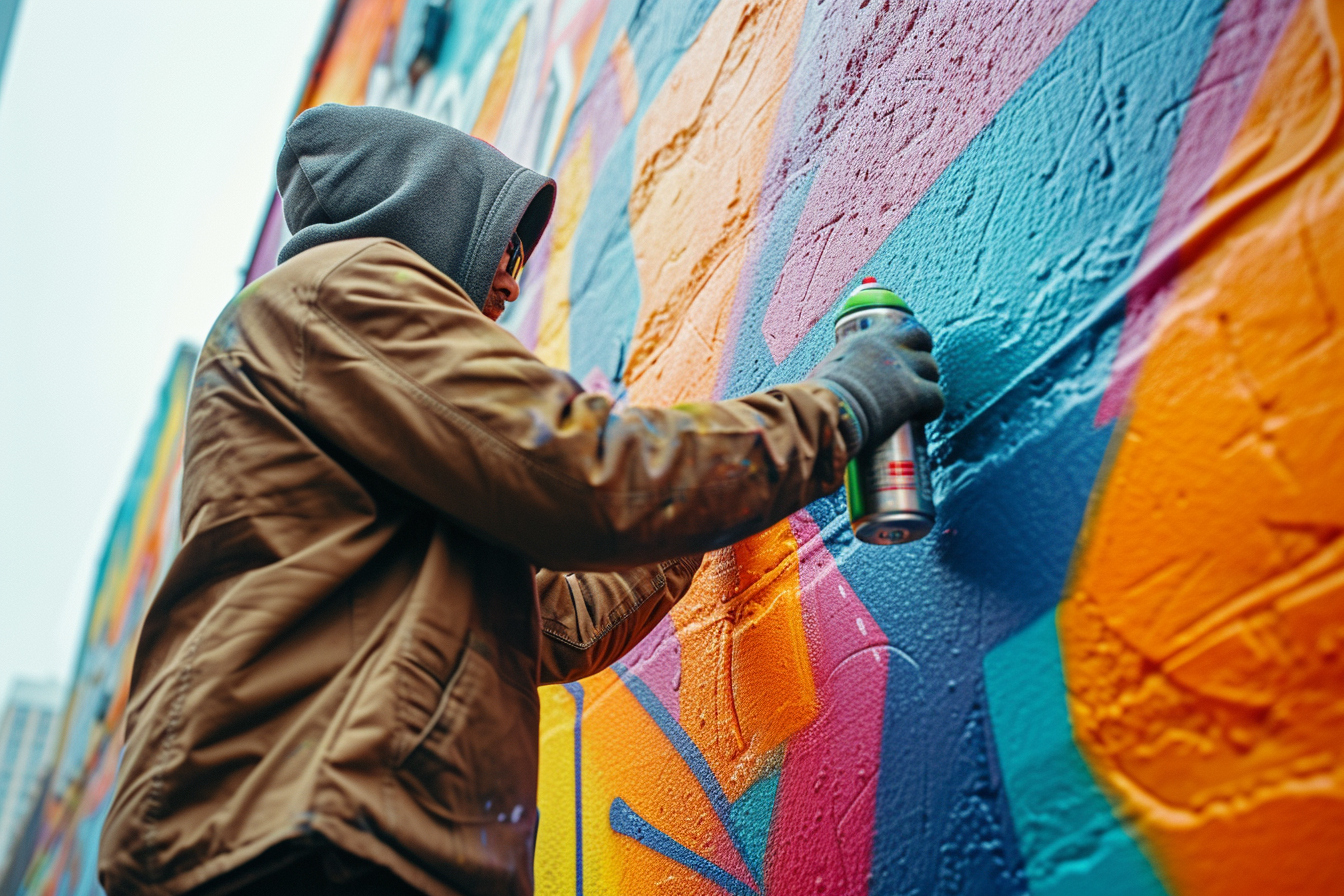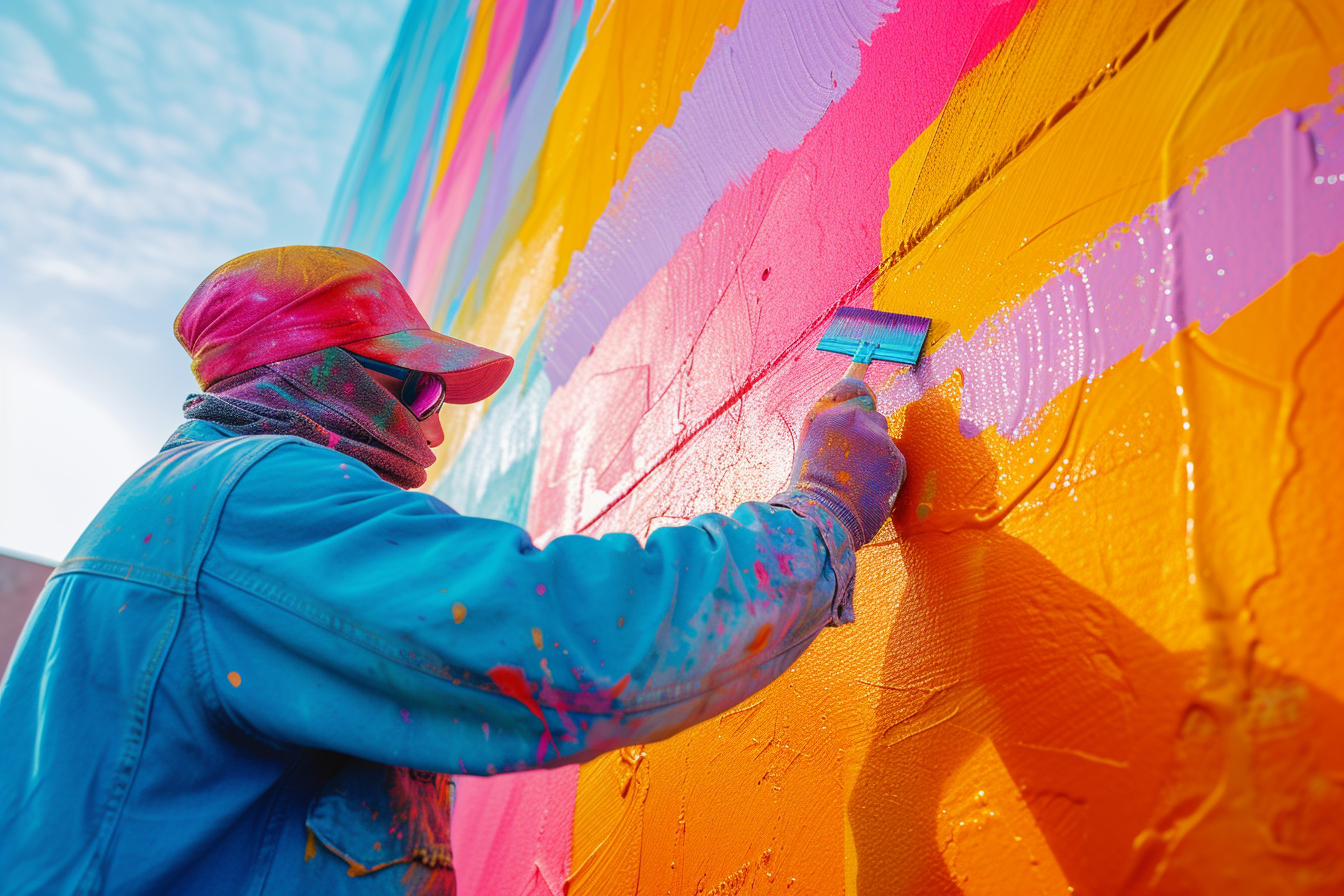
Street art represents the most vibrant form of creative expression visible in our urban landscapes. This powerful medium can convey messages, trigger emotional responses, and transform dull spaces into inspiring panoramas. To truly grasp the art form’s potential, one must approach its creation comprehensively. A blend of planning, skill, and spontaneity shapes the foundation of impactful street art.
Understanding street art’s essence
Before the paint can touch the wall, the artist must internalize what street art embodies. Street art is more than just visual—it is an interaction with a live audience, an engagement with the public space. A successful piece doesn’t just sit on the surface; it becomes an intrinsic part of the urban environment.
Discovery: finding your unique voice in art
All phenomenal street art starts with the artist’s unique voice. Diving deep into self-exploration allows you to discover themes, messages, and styles that resonate most profoundly with you. This introspective journey can lead to a powerful and authentic artistic expression that engages the viewer on a deeper level.
Mastering the techniques
Developing a skillset becomes an essential step in executing your vision. From spray paint control to understanding scale and composition, the mechanics of creating street art are unique in the art world. Therefore, aspiring street artists should strive to master various techniques through study and practice.
Finding inspiration everywhere
Inspiration is the lifeblood of creativity, and for street artists, the urban environment is an endless source. From societal issues to the very architecture and nature of the city, these factors can spark ideas that evolve into thought-provoking artworks. Scrutinize the world around you and let those observations fuel your creative process.
Legal considerations and ethics
One pivotal aspect often overlooked in the enthusiasm to create street art is legality. Ensuring that your work doesn’t infringe on property rights is just as important as the artwork itself. Seek out legal walls or obtain permission. Not only does this protect you, but it also respects the property owners and can lead to constructive relationships and opportunities.
Planning meets spontaneity
While some artists might prefer to let the streets guide their spray cans, others opt for a more structured approach. Creating sketches and drafts allows for intricate pieces that could not be realized through improvisation alone. However, remember the essence of the streets and allow for a degree of flexibility when you’re out ‘in the wild,’ adapting to the space and moment.
Collaboration: expanding creativity through unity
Street art is often a solitary practice, but it doesn’t have to be. Collaborating with other artists can yield a fusion of styles and ideas, resulting in pieces with layered meanings and rich textures. This communal aspect can also highlight community issues, bringing a diverse range of perspectives into the conversation.
The role of technology in street art
In the digital age, technology has become an unexpected ally to street artists. From projection mapping to digital sketch pads, these modern tools can assist in planning complex pieces, exploring virtual street art, or even expanding the possibilities of what can be done on a wall. Experimentation with emerging technology can lead to innovative forms of expression.
The impact of street art on communities
Good street art can have an incredibly beneficial impact on communities. Not only does it beautify and revitalize urban spaces, it can also stimulate local economies and foster pride among residents. Artists must be mindful of community sentiments, striving to produce pieces that resonate with locals and promote positive messages.
Sustainability in street art
A proactive approach to sustainability within street art involves the responsible selection of materials and a consideration for the environmental impact of your work. Opting for eco-friendly paints and cleaning up after the creation process are simple practices that demonstrate a commitment to preserving the urban ecosystem.
Elevating the narrative: storytelling through visuals
Effective street art often tells a story or highlights a narrative that sparks dialogue. Focus on integrating a strong narrative element in your work, something that communicates beyond words. The ability for viewers to connect with your piece on a narrative level can significantly amplify its impact.
The power of color psychology
The strategic use of color can greatly enhance the emotional tone of street art. Dive into the world of color psychology to better understand how certain hues can affect mood and behavior. The right palette can amplify the intended message of your artwork, making it resonate more profoundly with your audience.
Critique and evolution
Reflect on criticism and engage with the feedback from peers and viewers. The iterative process of reception, reflection, and refinement can steer your creative journey towards growth and evolution as an artist. Embrace this cycle as a fundamental part of the creative endeavor.
Documenting your work
In a world where street art can be fleeting due to weather or city ordinances, documenting your work is crucial. It not only preserves your art but also allows it to reach a wider audience through digital platforms. High-quality photographs and videos can turn temporary urban masterpieces into eternal pieces of art.
Navigating the future of street art
As urban spaces continue to evolve, so does the canvas for street artists. Artists should be pioneers, continuously pushing the boundaries of what street art can be. Look ahead and adapt to the changing landscapes, regulations, and societal trends, using them as a springboard for your creativity.
Ultimately, crafting street art is a dynamic process, combining respect for the environment with a passion for expression and a commitment to community engagement. This comprehensive approach transcends traditional boundaries, unlocking the potential for street art to be a powerful catalyst for creativity, discussion, and change. Engaging with each facet will not only elevate the artist’s work but also contribute to the enrichment and character of the urban canvas.

